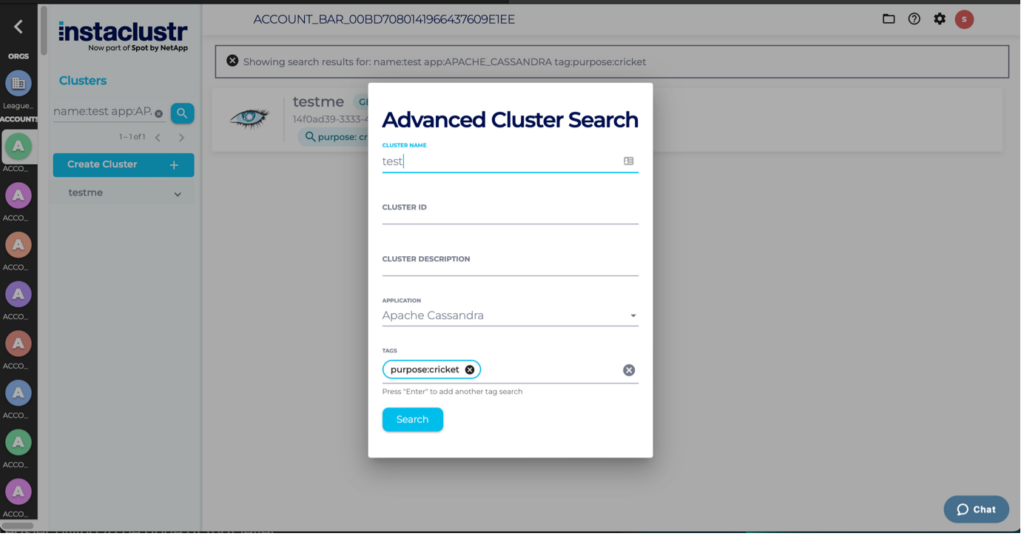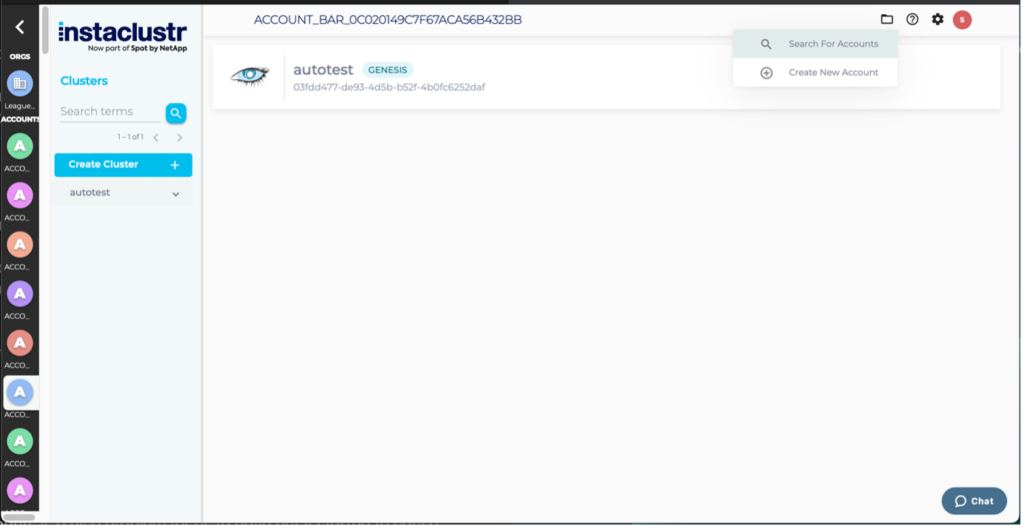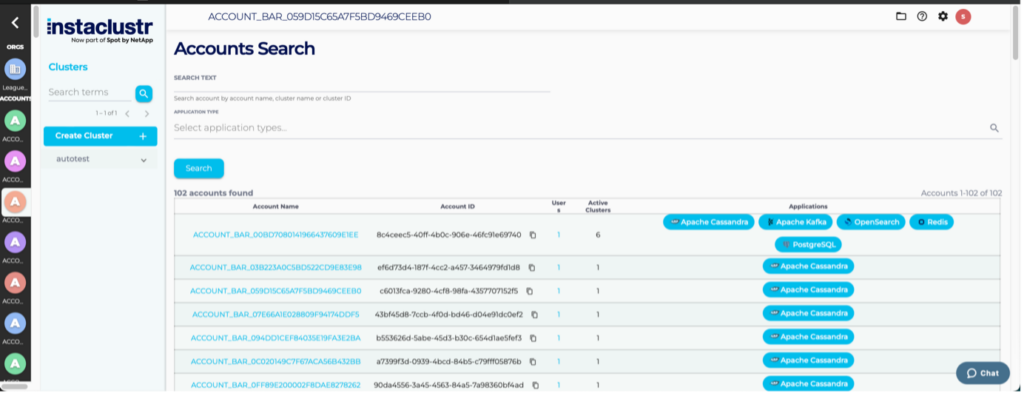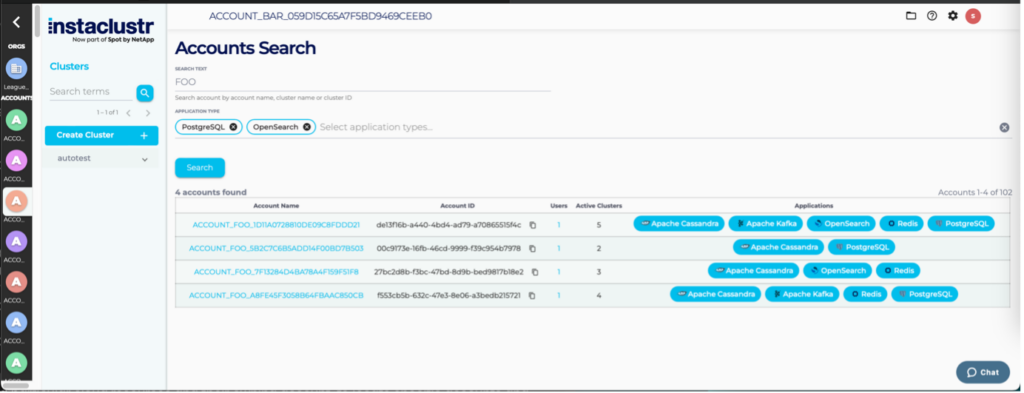Where Did I Drop My PostgreSQL® Cluster?
Instaclustr by Netapp has seen enormous growth in the number of accounts that our larger enterprise customers have created to manage their deployments. This naturally led to the introduction of Instaclustr Organizations linked to accounts in a similar, flexible way; you could even have a user manage multiple organizations.
That can be a lot of users, linked to even more accounts, linked to a few organizations, all of whom are creating and managing increasingly large clusters, reliably serving data upstream into their business functions.
The Instaclustr Console has always provided powerful search features for finding clusters within the scope of a given account, using criteria such as custom tags, name, ids, and application types. We wanted to extend this existing search capability to reach out across all accounts from a single search view.
So, where was that PostgreSQL cluster?
For a small organization you’d see something like this:
Notice the powerful “clusters search” field, giving the ability to find a cluster by name, type, UUID, or tag within a given account ‘scope’. But what if you don’t remember which account made the cluster you are looking for? What if we are looking for all clusters, across all accounts that have a particular tag? It can be difficult to ‘globally’ search for a cluster across different accounts.
So, we had a powerful interface optimized for locating clusters within a single account, which worked well for the “few accounts having many clusters” scenario.
It has become more common for customers to create many accounts, each managing smaller groups of clusters–in other words, the accounts can be ‘shallower’. While the core questions asked are the same (finding a cluster, finding an account), the search scope is growing.
Important Questions
Let’s step back and restate the types of questions we’d like easy answers for:
- Where is that cluster (across all accounts)?
- Where is that account and what does it own?
We’ve answered both questions with the new “Account Search” feature, which is a global action selected from the top right ‘folder’ menu bar item:
This action will take you to a new search page that shows you all the accounts, and an overview of their clusters (applications) that you have access to. It will provide you with a helpful overview, by account, of your managed applications. From here you can narrow down the account list through certain criteria, such as the earlier cluster search.
Let’s go through each type of supported search.
The “SEARCH TEXT” field allows you to enter a partial account or cluster name. You can even enter the UUID of a cluster if you happen to have it lying around!
The “APPLICATION TYPE” multi-select control allows you to look for accounts containing that application type.
Let’s enter the traditional “FOO” for a partial account name and look for accounts that have either a Postgres or an OpenSearch cluster in them. After adding those values in and pressing the search button, I got the following results:
From each account result row, you may use the navigation links to go directly to the account scope view, or to a list of linked users for that account. Having these kinds of shortcuts can help quickly jump across different search scopes directly, and we’ll keep adding more of them when appropriate.
Conclusion
Customers are working with the Instaclustr Platform to create and manage increasingly sophisticated, varied, and expansive data applications, and using more accounts to manage the operations and billing of those resources. The account-search feature is a next step facilitating users to search for resources, globally, across all accessible accounts.
We’ll keep adapting our Management Console so that it grows in step with our enterprise-scale fleets, whilst also maintaining a useful focus for smaller companies and individual developers. We want it to be nice to use for both ends of the spectrum. This new feature will allow you to quickly find that one Postgres cluster you are sure you provisioned last year but can’t recall for whom.
Have any suggestions about the feature? Please feel free to get in touch using the “Feedback” button under the Support menu in the top right corner–we’re excited to hear from users!
Author

Senior Software Engineer




